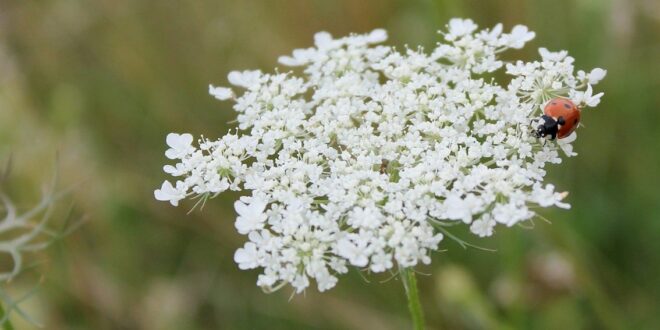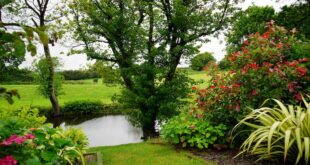A few make an appearance in spring. More wait until autumn. But summer is show time for nature’s unbelliferae. This family of plants, adorned with umbrella-shaped flowers, take over the summer garden like no other, bringing with them structure and form. On warm evenings, clouds of tiny insects hover above the umbrella flowers, and just before the sun sets, the frothy blooms appear suspended, as if by magic, over the rest over the garden’s inhabitants.
Umbrella flowers are usually borne on tall, hollow stems that branch at the tip to a multitude of short stalks on which are carried clusters of tiny flowers. En masse, they bring lightness and space to the garden, and the typically relaxed feel of cottage style planting.
Although many umbrella flowers are lacy white or rich cream, others are yellow, deep burgundy, and pink. All of them are architecturally elegant, and although many are annuals, biennuals, or short-lived perennials, each flower head produces masses of seed that spread widely. This makes them strong colonisers (we have only to think of how quickly hemlock spreads), but doesn’t mean the seedlings are easily transplanted. Most umbellifer have long taproots (carrot and parsnip are two well-known examples), making them difficult to remove from the soil once established. Don’t be put off by umbrella flowers’ tendency to colonise, as this can be managed by clipping off the flower heads when they are past their best, and before they have set seed.
Umbrella flowers may be strikingly pretty, but many are also phototoxic, producing a substance which renders human skin sensitive to sunlight, resulting in skin inflammation. Some umbrella plants, such as hemlock, are highly poisonous, and many are aromatic (think: celery, parsley, caraway, coriander and lovage).
Gardeners in the know, welcome umbrella flowers as a way of encouraging beneficial insects into the garden. Because the flower heads are large, they are easily spotted by insects, while their relatively flat surface makes them highly attractive as a mating habitat. The flowers themselves are a rich source of pollen and easily-accessed nectar. Following summer flowering, the hollow stems of the dead umbrella flower stalks provide a place of refuge for over-wintering insects, or their eggs.
Get the look!
Some umbrella plants enjoy dappled light and damp conditions (which is perhaps why we so often see them along grassy roadsides), while others prefer sharp drainage and full sun. Some, such as angelica, offer bold structure, making them perfect as border edging. Others, such as Queen Anne’s lace are frothy fillers.
Perhaps one of the best ways to collect umbrella flowers is to visit a public garden close to you, in the height of summer. Look for umbrella flowers in herbaceous borders, and snap those you like with your phone camera. Once you’re back home, use Google image search (click on the camera icon in the search bar to get you started) to help you find the names of these flowers. When hunting down plants or seeds of your favourites, head to New Zealand ‘cottage garden’ sites to peruse their catalogues. Puriri Lane (Auckland) comes highly recommended. Suppliers of herb seed (such as Kings Seeds) will also have umbrella varieties.
Companions for your umbrella plants are a must, and as with the umbrellas themselves, you are looking for a relaxed style – think gently spreading, old-fashioned, repeat-flowering perennials such as species geranium, low growing campanula, scabiosa, perennial cornflower, and violas (check out Heirloom Perennial Nursery to get you started).
If you simply want to head to the local garden centre, keep your eyes open for colour pops in gold (golden alexanders, fennel, and dill), burgundy (Angelica gigas and Daucus Carota – also known as ‘Chocolate kisses’), and pink (Chaerophyllum hirsutum ‘Roseum’ – hairy chervil, and sedum).
Start your collection now, and fill your garden with nature’s umbrellas!










Join the Discussion
Type out your comment here:
You must be logged in to post a comment.